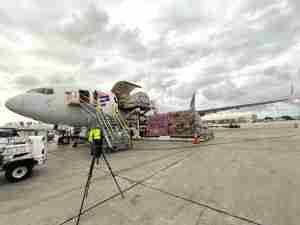The California Air Resources Board (CARB) has identified the Low Carbon Fuel Standard (LCFS) as a critical program to help California achieve carbon neutrality by 2045 and to improve air quality in the State.
A rulemaking document recently released by the California Air Resources Board (CARB) suggests that the state will accelerate and extend the LCFS carbon intensity reduction targets for the transportation sector, achieving a 30 percent reduction by 2030 and a 90 percent reduction by 2045. The current target in California is a 20 percent reduction in fuel carbon intensity by 2030. A final, comprehensive rules package is expected in the next month.
The carbon intensity of a fuel is the amount of carbon emitted throughout its life cycle. The upcoming rulemaking proposal is anticipated to include the greatest carbon intensity reductions and the longest timeframe ever announced in state or federal policy.
The recommendation from CARB comes on the heels of a study conducted by ICF and coordinated by the Low Carbon Fuels Coalition, which assessed the feasibility of achieving even greater carbon intensity reductions in California. The Coalition convened stakeholders representing the entire range of clean fuels industry to commission the study, titled “Analyzing Future Low Carbon Fuel Targets in California,” which was submitted to CARB for review.
Low carbon fuel producers have been attracted to the state and the mix of clean fuels available to Californians has increased dramatically since 2011, when the Low Carbon Fuel Standard went into effect. Indeed, California’s transportation sector is already transforming with biodiesel and renewable diesel supplying most of California’s diesel fuel demand, renewable natural gas surpassing fossil natural gas use in CNG vehicles, new electric vehicle purchases capturing over 25% of light-duty sales, and high blend E85 ethanol demand expanding faster than any other fuel.
By mazimizing the contribution from all of the clean fuels available today, the ICF study concludes that greater carbon reductions are achievable. More aggressive targets mean lower carbon emissions and reduced pollution from the transportation sector, while at the same time benefitting drivers by increasing availability of cheaper and cleaner options as alternatives when oil price spikes drive up gasoline prices.
CARB is considering setting more ambitious LCFS targets of greater than 30 percent to achieve significant greenhouse gas emission reductions in support of California’s pursuit of carbon neutrality. Based on the ICF study, the Low Carbon Fuels Coalition and broad industry supporters recommended an even higher reduction of carbon intensity, to 42 percent in 2030 and 77 percent by 2040.
The ICF report modeled a central case and a higher ambition case, exploring potential carbon intensity reductions based on an array of expected and potential developments in low carbon fuels markets. The ICF report states that “In our modeling, ICF finds that a carbon intensity target of 41-44% for 2030 is achievable in the Central Case based on expected fuel volumes and carbon intensity reductions for a wide array of fuel pathways.” The high ambition case showed that carbon intensity reductions of as much as 57% in 2030 could be achieved based on accelerated market deployments of low carbon fuels and potential policy changes, including changes to align with the State’s carbon neutrality targets as outlined in the Scoping Plan.
“Our coalition firmly believes that a higher target than 30% for 2030 is not only fully supported by the ICF analysis and industry trends, but necessary to continue the remarkable success of the LCFS program,” said Robin Vercruse Policy Director of the Low Carbon Fuels Coalition. “The time for bold action is now. To avoid catastrophic consequences of climate change we need to make significant progress in reducing carbon emissions this decade. The LCFS program has consistently exceeded expectations, setting the foundation for an accelerated path to carbon neutrality in California as long as the policy maintains sufficient ambition to drive progress.”
The Standardized Regulatory Impact Assessment, published September 8, 2023, represents the first step in CARB’s formal rulemaking process. By the end of this year, CARB is expected to release a final proposal, and proceed with the formal rulemaking process, for across-the-board carbon reduction in the transportation sector.








